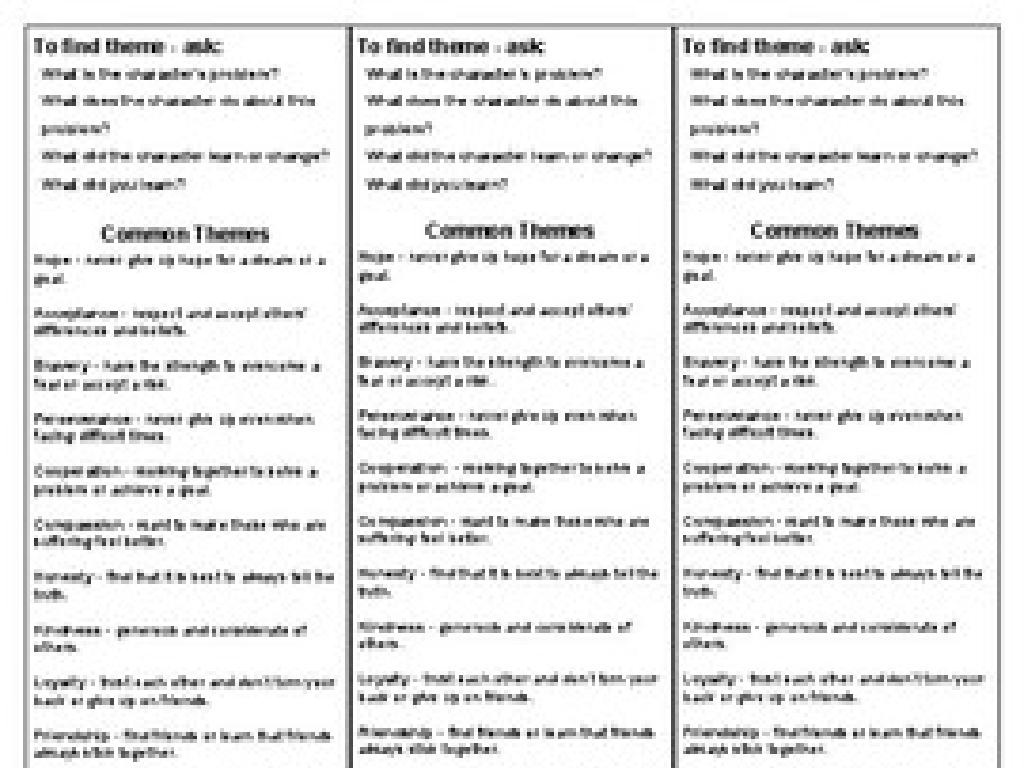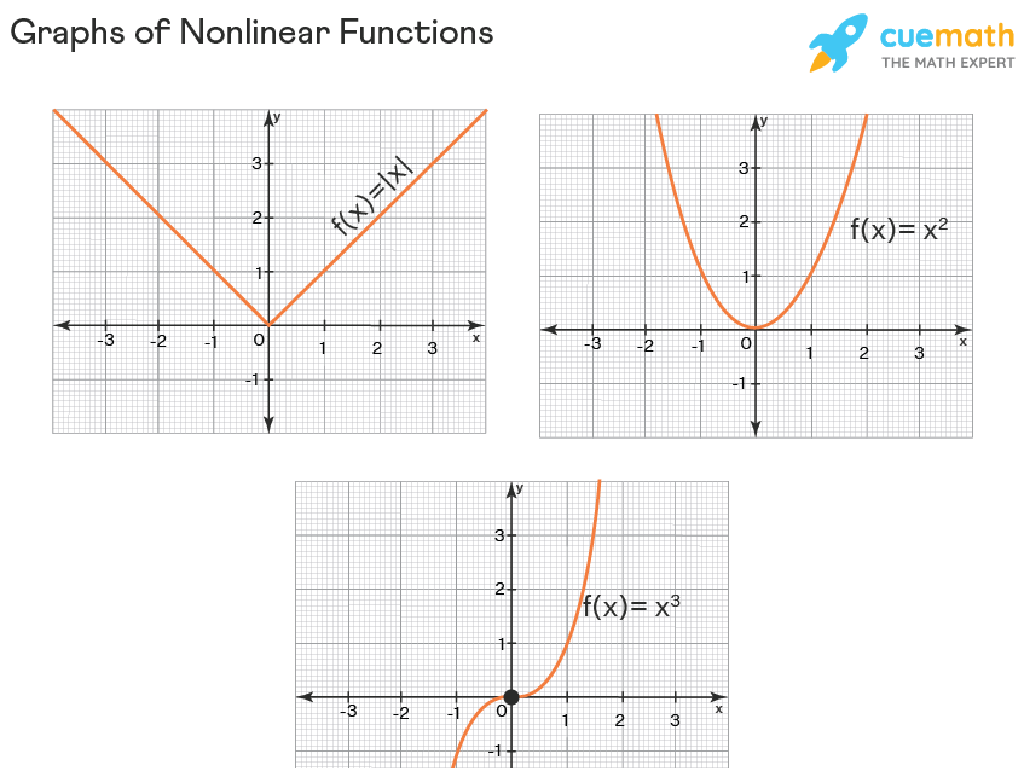Estimate Positive Square Roots
Subject: Math
Grade: Eighth grade
Topic: Square Roots And Cube Roots
Please LOG IN to download the presentation. Access is available to registered users only.
View More Content
Introduction to Square Roots
– What is a square root?
– The square root of a number is a value that, when multiplied by itself, gives the number.
– Finding square roots explained
– To find the square root, ask ‘what number times itself equals this?’
– Recognize perfect squares
– Perfect squares are numbers like 1, 4, 9, 16, which are squares of whole numbers.
– Estimating non-perfect squares
– For non-perfect squares, estimate between two perfect squares.
|
This slide introduces the concept of square roots, an essential part of understanding algebra and geometry. Start by defining what a square root is and how it relates to the original number. Use examples like the square root of 4 is 2 because 2 x 2 equals 4. Highlight perfect squares, which are the squares of integers, and show how to quickly identify them. Then, guide students on how to estimate the square root of non-perfect squares by finding the nearest perfect squares. For instance, the square root of 10 is between the square root of 9 (3) and the square root of 16 (4). This foundational knowledge will be crucial for solving more complex math problems involving square roots.
Estimating Positive Square Roots
– Importance of estimating square roots
– Estimation helps when exact values are not needed, like in measuring areas.
– Finding nearest perfect squares
– Identify squares closest to the number, like 36 and 49 for 42.
– Estimating with a number line
– Place the number between squares on a line to guess the root.
– Practice estimation skills
|
Understanding how to estimate square roots is crucial for solving real-world problems where exact answers are not necessary, such as estimating the area of a garden. Teach students to find the nearest perfect squares that a number falls between, which will help them to estimate the square root more accurately. Using a number line can visually aid in understanding how close or far a number is from a perfect square, thus helping to estimate its square root. Encourage students to practice with different numbers to improve their estimation skills. Provide examples and exercises for them to work on, and discuss the importance of estimation in various mathematical and practical applications.
Estimating Positive Square Roots
– Find two integers between the square root
– If 50, it’s between 7 (49) and 8 (64)
– Refine estimates by narrowing range
– After initial guess, use midpoints to get closer
– Practice with example square roots
– Example: Estimate 20, between 4 (16) and 5 (25)
– Understand estimation accuracy
– Estimations won’t be exact, but can be very close
|
This slide introduces students to the concept of estimating square roots. Start by explaining how to determine the two integers a square root falls between by finding the perfect squares that are closest to the number. Then, show how to refine the estimate by considering midpoints between those integers. Provide practice examples for the students to work through, such as estimating the square root of 20. Emphasize that while estimations are not exact, they can be very close and are useful for understanding and working with square roots in various mathematical contexts.
Real-life Applications of Square Root Estimation
– Uses in everyday life
– Examples: architecture, carpentry, tech
– Architects estimate material needs, carpenters use it for creating plans, tech fields apply it in algorithms
– Estimation for quick decisions
– Estimating square roots can save time and resources when exact values aren’t necessary
– Enhancing problem-solving skills
– Estimation helps in making approximate calculations quickly, useful in various professions
|
This slide aims to show students the practical applications of estimating square roots in various fields such as architecture, where it might be used to calculate the square footage of a building, in carpentry to determine the diagonal length of a cut, or in technology where algorithms might use square root estimations for efficiency. Emphasize the value of estimation skills in making quick, informed decisions when exact calculations are not required, which is a common scenario in many jobs. Encourage students to think of other areas where this skill might be useful and to practice estimation to improve their problem-solving abilities.
Class Activity: Estimating Square Roots
– Estimate square roots of given numbers
– Pair up and use number lines
– Work with a partner to visualize square roots on a number line
– Share and discuss your estimates
– Compare your results with classmates and understand different approaches
– Reflect on estimation accuracy
– Discuss why some estimates are closer than others and how to improve
|
This activity is designed to help students understand the concept of square roots in a practical way. By estimating the square roots of provided numbers, students will develop a better intuition for the magnitude of square roots. Pairing up allows for collaborative learning and the use of number lines will enable students to visualize the concept better. After sharing their estimates with the class, encourage a discussion on the methods used and the accuracy of their estimates. This will help them to understand the importance of precision and the value of different estimation techniques. Possible activities include estimating square roots of perfect squares, non-perfect squares, and comparing their estimates to actual square root values to assess accuracy.
Estimating Positive Square Roots: Review & Practice
– Recap estimation techniques
– Review methods like rounding to nearest squares
– Class solves example problems
– Work through problems together on the board
– Engage in a Q&A session
– Open floor for questions about estimation
– Clarify any confusion
|
This slide is aimed at reinforcing the estimation techniques for positive square roots covered in today’s lesson. Begin by summarizing the key points and methods, such as rounding to the nearest perfect square or using number lines. Then, as a class, solve additional example problems to apply these techniques in practice. Encourage participation from all students to ensure collective learning. Finally, conduct a Q&A session where students can ask questions and express any points of confusion. Address these questions with patience and provide clear explanations to ensure students leave the class with a solid understanding of the topic.
Homework: Estimating Square Roots
– Estimate square roots for homework
– Find the nearest perfect squares around the number
– Document your estimation steps
– Note down each step, like identifying perfect squares
– Be ready to discuss your process
– Think about how you arrived at your estimate
|
This homework assignment is designed to reinforce the concept of estimating square roots, which is a key skill in understanding the properties of numbers. Students are expected to find the nearest perfect squares that surround the given number and use them as reference points for their estimation. It’s crucial for students to write down the steps they take during the estimation process, as this will help them understand and remember the method. In the next class, there will be a discussion where students can share their methods and learn from each other’s approaches. This will also give the teacher insight into the students’ understanding and provide an opportunity for further clarification.






